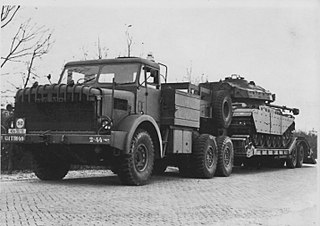 W
WThe General Electric LM2500 is an industrial and marine gas turbine produced by GE Aviation. The LM2500 is a derivative of the General Electric CF6 aircraft engine.
 W
WThe General Electric LM6000 is a turboshaft aeroderivative gas turbine engine. The LM6000 is derived from the CF6-80C2 aircraft turbofan. It has additions and modifications designed to make it more suitable for marine propulsion, industrial power generation, and marine power generation use. These include an expanded turbine section to convert thrust into shaft power, supports and struts for mounting on a steel or concrete deck, and reworked controls packages for power generation. It has found wide use including peaking power plants, fast ferries and high speed cargo ship applications.
 W
WAn inboard motor is a marine propulsion system for boats. As opposed to an outboard motor where an engine is mounted outside the hull of the craft, an inboard motor is an engine enclosed within the hull of the boat, usually connected to a propulsion screw by a driveshaft.
 W
WMarine automobile engines are types of automobile petrol- or diesel engines that have been specifically modified for use in the marine environment. The differences include changes made for the operating in a marine environment, safety, performance, and for regulatory requirements. The act of modifying is called 'marinisation'.
 W
WA marine LNG engine is a dual fuel engine that uses natural gas and bunker fuel to convert chemical energy in to mechanical energy. Due to natural gas’ cleaner burning properties, the use of natural gas in merchant ship propulsion plants is becoming an option for companies in order to comply with IMO and MARPOL environmental regulations. The natural gas is stored in liquid state (LNG) and the boil-off gas is routed to and burned in dual fuel engines. Shipping companies have been cautious when choosing a propulsion system for their fleets. The steam turbine system has been the main choice as the prime mover on LNG carriers over the last several decades. The decades-old system on steam propelled LNG carriers uses BOG. LNG carriers are heavily insulated to keep the LNG at around -160 °C – to keep it liquefied. What happens is that even with all the insulation, the LNG containment area is penetrated by heat which allows for naturally generated boil-off gas (BOG).
 W
WMercury KG-7Q Super 10 Hurricane is an outboard motor built by Kiekhaefer Mercury during the years of 1950 through 1952.
 W
WAn outboard motor is a propulsion system for boats, consisting of a self-contained unit that includes engine, gearbox and propeller or jet drive, designed to be affixed to the outside of the transom. They are the most common motorised method of propelling small watercraft. As well as providing propulsion, outboards provide steering control, as they are designed to pivot over their mountings and thus control the direction of thrust. The skeg also acts as a rudder when the engine is not running. Unlike inboard motors, outboard motors can be easily removed for storage or repairs.
 W
WThe Rolls-Royce Marine Olympus is a marine gas turbine based on the Rolls-Royce Olympus aircraft turbojet engine.
 W
WThe Rolls-Royce Marine Spey is a marine gas turbine based on the Rolls-Royce Spey and TF41 aircraft turbofan engines. The Marine Spey currently powers seven ship classes including the Royal Navy's Type 23 frigates and provides a power output of 19.5 MW. The Marine Spey incorporates technology from the Tay and RB211.
 W
WThe Rolls-Royce Meteor later renamed the Rover Meteor is a British tank engine that was developed during the Second World War. It was used in British tanks up to 1964. It was a result of co-operation between Leyland Motors and Rolls-Royce who between them in 1941 had suggested that a specialised de-rated version of the Merlin aero-engine would be highly suitable for use in armoured fighting vehicles.
 W
WThe Rolls-Royce Meteorite was a British V8 petrol or diesel engine of 18.01 litres (1,099 cu in) capacity, and was derived from the Rolls-Royce Meteor, which was itself based on the Rolls-Royce Merlin aircraft engine. The Meteorite was, in essence, two-thirds of a V12 Meteor and it shared the Meteor's 60° vee angle. Meteorites were built for vehicles, for marine use and as stationary power units.
 W
WSabb Motor is a Norwegian maker of small marine diesel engines, mostly single-cylinder or twin-cylinder units. The firm was established as Damsgaard Motorfabrikk by two brothers, Alf and Håkon Söyland in 1925. The firm started building engines to meet the demand of fishermen who wanted simple, robust and reliable power for their boats..
 W
WThe hot-bulb engine is a type of internal combustion engine in which fuel ignites by coming in contact with a red-hot metal surface inside a bulb, followed by the introduction of air (oxygen) compressed into the hot-bulb chamber by the rising piston. There is some ignition when the fuel is introduced, but it quickly uses up the available oxygen in the bulb. Vigorous ignition takes place only when sufficient oxygen is supplied to the hot-bulb chamber on the compression stroke of the engine.
 W
WThe Universal Atomic 4 is a four-cylinder, gasoline engine produced by the Universal Motor Company between 1949 and 1984 for use as auxiliary power on sailboats. Both 18 horsepower (13 kW) and 30 horsepower (22 kW) versions of the engine were produced. Over 40,000 of the engines were produced during that time, with an estimated 20,000 still in use today.
 W
WThe Rolls-Royce WR-21 is a gas turbine marine engine, designed with a view to powering the latest naval surface combatants of the partner nations.